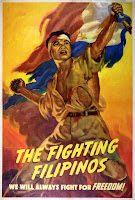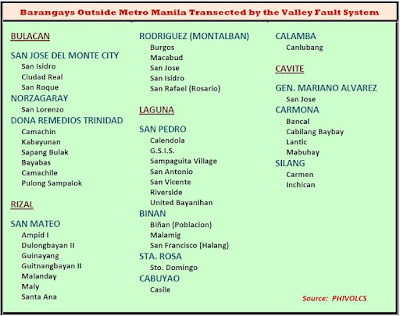Note: This photo-essay was in the 'living' section of the 26 Jun - 02 Jul 2015 issue of FilAm Star, the weekly 'newspaper for Filipinos in mainstream America' published in San Francisco, CA. This author/blogger is the Manila-based special news/photo correspondent of the paper.
| National
Artist BenCab in front of Soldiers (Heroes of the Past IV), his work in the Lopez Museum and Library collection. |
It’s been fifty years since National Artist Benedicto Reyes
Cabrera, the popular BenCab, had his first exhibit in a three-man show at the
Art Association of the Philippines Gallery. The next year, 1966, he was 24, and
he had his first solo exhibition of oil and acrylic paintings at the Indigo
Gallery in Mabini. In celebration of his
half-a-century of art practice, these three exhibitions are ongoing for public
appreciation of his achievements: Frames of Reference at the Lopez Museum and
Library (until 04 July 2015), BenCab in Multiples: A Print Retrospective at the
CCP Main Gallery (until 16 August 2015), and Ode to the Flag at the BenCab
Museum in Benguet (until 02 August 2015).
 |
| Sabel, 2005 |
The Sabel theme can be seen in various transformations in the artist's paintings and prints. She dates back to 1964 when she was a bag lady, a scavenger that he observed and sketched from the window of their family house in Bambang in Tondo. To BenCab, according to the BenCab Museum webpage, Sabel is "a symbol of dislocation, despair and isolation - the personification of human dignity threatened by circumstances."
The Frames of Reference exhibits enable us to look at
BenCab as artist (photographer, painter, printmaker), lover, family man,
bibliophile and collector of historical and cultural artifacts.
Glimpses into BenCab’s life can be gleaned
from about 15 of his art-books that comprise compilations of collages
(clippings and cut-outs), drawings and sketches interspersed with his
handwritten notes. These prominently feature his love for nostalgia, handmade
paper and bookbinding. His small scrapbooks look like diaries containing his
aesthetics, letters, mementos and other keepsakes.
 |
Rizal’s and Leonor’s
Letters. 1998.
Lopez Museum & Library Collection.
|
His other hand-crafted books show early
studies and iterations of some of his most important series of
works: Sabel, Larawan and Japanese Women (ukiyo-e). Also on
exhibit are his early folios of prints he was a part of, along with other
Filipino and foreign artists.
We had an amusing time poring through BenCab’s notes, scribbles,
and studies, which he did in a playful or studied manner, by using a magnifying
glass or viewing the enlarged screen images of pages of his digitized art-books:
Embossed Prints, Book of Collages, Small Prints, and An English Scrapbook.
Among the Collages was one of Ninoy Aquino with the
Philippine flag and the date Agosto 21, probably his memento of his
participation in the EDSA I revolt. We
chuckled when we saw a picture of Stalin among those he clipped from newspapers
in his English Scrapbook.
 |
Postcard to Annie
Sarthou, 08 Feb 1988.
|
We were delighted listening to him in his two postcards
dated February 1988, one with a sketch of himself in a crowd in freezing
London, and the other, carrying in the cold a painting. He was speaking of his
anxieties in setting up his art exhibition (carpentry work, framing,
invitations, guests list, etc) at the October Gallery in London. And here he is
being very fatherly: “The kids are doing
fine. Mayumi might do a front cover for Elle Mag. I have to think of what to
give to Jasmine for her birthday. She is learning piano. Elisar and I share the
evening usually. After cooking meals for him, I watch TV. But usually his
choices. Also got hook on his comic books.”
That exhibit was of his Recent Works that included ‘America
Is in the Heart,’ a large painting in oil, “inspired by Carlos Bulosan’s
autobiography which describes the racial discrimination against Filipinos in
the United States.”
 |
| 1081. Print, 1975. |
He was actually returning to London in 1988. He had been back for good in 1986 and chose
to stay in Baguio. He arrived in time for
the EDSA Revolution, which he chronicled with a painting of two women standing
in a rain of yellow confetti.
BenCab’s large Soldiers (Heroes of the Past IV) painting in
the Lopez Museum and Library Collection,
which he did in 1998 with charcoal, chalk, acrylic on hand-made paper,
reminded us that we have seen the two historical pictures, which inspired the work.
The biography cited earlier tells us that “a turning
point in his work is his discovery of rare Filipiniana prints and photographs
in London’s antiquarian bookshops.” Filipiniana materials such as photographs,
maps, prints, and illustrated travelogues inspired him to start Larawan series
comprising portraits of the Filipina in 19th century attire, nostalgic images
of colonial Philippines, Filipino migrants, expatriates and exiles, that
explored “themes of cultural alienation and spiritual distancing.”
His other collections comprise Cordillera artifacts like
the bulol (representation of the rice god) and tabayag (carved lime container
for the areca leaf chewable), among others.
These are housed at the BenCab Museum in Tuba, Benguet, which can easily
be reached from Baguio City.
The Cordillera people and its culture have also been
subjects of the national artist’s paintings and prints. He has also documented
the Cordillera insurgency.
In his Ode to the Flag exhibit at the BenCab Museum, the national artist portrays the "flag -- draped, wrapped and displayed with the likes of Andres Bonifacio ... [and] on anonymous human forms that are not seen, suggesting the countless, nameless Filipinos who fought for freedom." It also reminds "that the fight is not yet over, and suggests that our flag, as yet, does not fly in skies that are truly free." This affirms why he has been called an "artist-activist."
 |
Pictures of BenCab’s
paintings in the Ode to the Flag exhibit. (From the BenCab Museum Facebook album).
|
In 2006, he was conferred the Order of National Artist for Visual Arts by President Gloria Macapagal Arroyo.
The citations he received when he was conferred the degree of Doctor of Humanities, honoris causa, by his alma mater, the University of the Philippines, in 2009, basically sum up his achievements in 50 golden years: "his incisive contribution to Philippine Art, lavishly expressed in a visual granary of Filipino imagery, gleaned from the country's inspiring historic past to the penetrating banalities of contemporary art ... and for his pioneering work to uphold the cultural being of the country's indigenous peoples and for spearheading initiatives to benefit the cultural, economic and social life of the underprivileged."




















